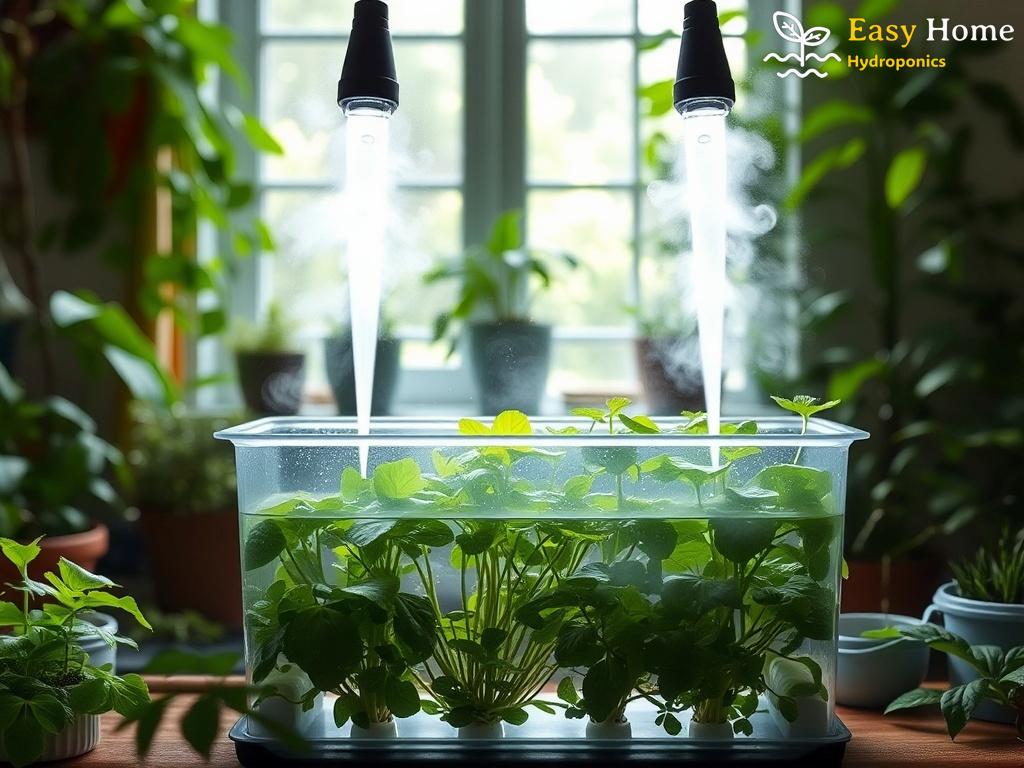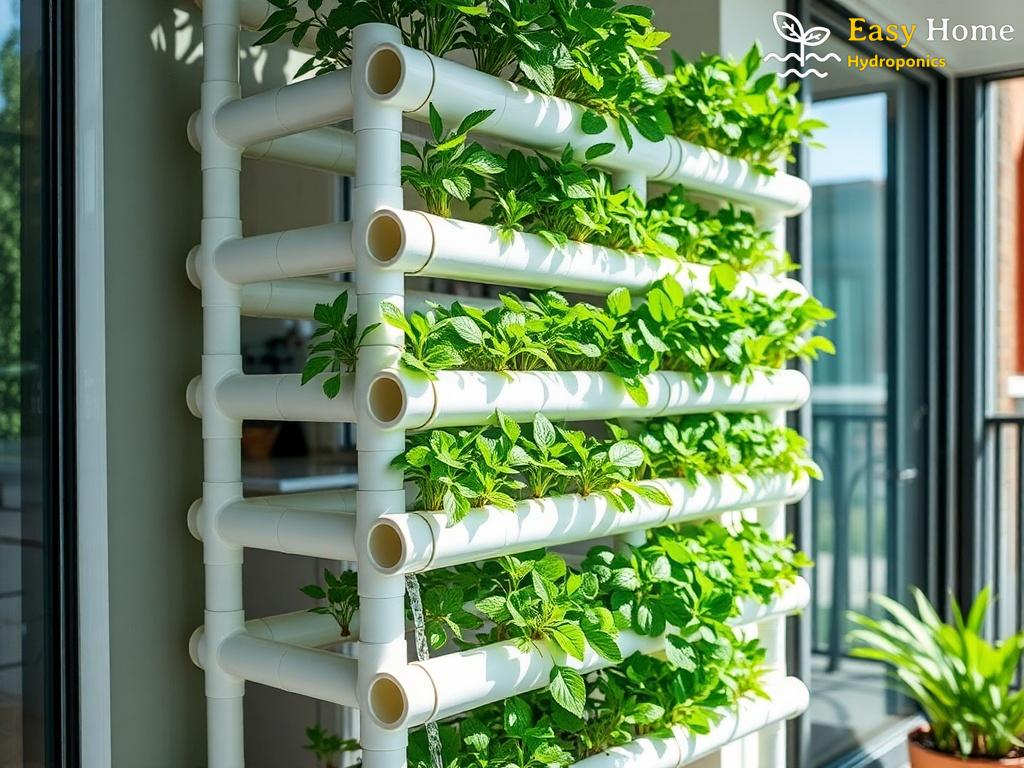Understanding Fogponics and Its Benefits

The Science Behind Fogponics
Fogponics is an innovative method of growing plants that utilizes a misting system to deliver nutrients directly to the roots of the plants. This technique is a combination of hydroponics and aeroponics, ensuring that plants receive the perfect balance of moisture and nutrients without the need for traditional soil. But what exactly makes fogponics special?
Fogponics operates by creating a fog-like environment that allows for maximum oxygen absorption, which is crucial for healthy root development. The use of ultrasonic misters breaks down water into tiny droplets, creating a nutrient-rich mist. This not only improves the efficiency of nutrient uptake but also minimizes water usage, making it an environmentally friendly choice for growers.
Benefits That Make Fogponics Stand Out
The advantages of adopting a fogponics system are numerous, ranging from space-saving solutions to enhanced growth rates. Let’s dig deeper into the key benefits:
- Space Efficiency: Fogponics systems can be set up in smaller areas, making them ideal for urban gardening or indoor setups.
- Faster Growth Rates: The mist environment promotes faster root growth and nutrient absorption, leading to quicker plant maturation.
- Reduced Water Usage: By misting instead of flooding, fogponics uses significantly less water than traditional growing methods.
- Less Risk of Disease: The absence of standing water limits the risk of root rot and other waterborne diseases.
- Versatility: Fogponics can be used for a wide variety of plants, from herbs to larger vegetables.
Is Fogponics Right for You?
Considering the benefits, you might wonder if fogponics is the right growing method for you. To help you assess this, here’s a quick comparison table of fogponics against other growing techniques:
| Method | Water Usage | Space Requirement | Growth Rate |
|---|---|---|---|
| Fogponics | Low | Minimal | Fast |
| Hydroponics | Moderate | Moderate | Fast |
| Soil Gardening | High | Varied | Slow |
Ultimately, the decision to adopt a fogponics system depends on your gardening goals, available space, and willingness to experiment. With its unique advantages, fogponics presents a compelling option for both novice and experienced gardeners alike.
Choosing the Right Ultrasonic Mister for Your System
As you embark on your journey to set up a DIY fogponics system, one of the most critical components you’ll need to consider is the ultrasonic mister. This device is responsible for generating the nutrient-rich mist that nourishes your plants, making its selection pivotal to the success of your fogponics garden. Choosing the right ultrasonic mister can be a game-changer, impacting everything from plant growth to the overall efficiency of your system.
Understanding Mister Specifications: Not all ultrasonic misters are created equal. When selecting one, it is essential to focus on specifications such as mist output, frequency, and power consumption. A mister with a higher mist output will create a denser fog, which is beneficial for larger setups or when growing multiple plants simultaneously. Additionally, consider the frequency; most effective misters operate between 1.7 and 2.4 MHz, which is optimal for breaking water into fine droplets. Lastly, power consumption matters, especially if you plan on running your system continuously. Look for energy-efficient models that will not inflate your energy bill.
Size and Compatibility: The size of the ultrasonic mister should align with your growing space. Larger misters may be necessary for expansive setups, while smaller units can suffice for compact environments. Compatibility is another factor to keep in mind; ensure that the mister you choose can easily integrate with your existing system components, such as the reservoir and the misting chamber. A well-matched system enhances the performance and reliability of your fogponics garden.
Durability and Maintenance: A long-lasting ultrasonic mister is a worthy investment. Look for misters constructed with high-quality materials that can withstand the humidity of the environment. Regular maintenance is equally crucial; choose models that are easy to clean and maintain to prevent any buildup that could hinder performance. A unit that is user-friendly in terms of upkeep will save you time and effort in the long run, allowing you to focus on nurturing your plants.
In conclusion, the right ultrasonic mister is a cornerstone of an effective fogponics system. By assessing key factors such as specifications, size, compatibility, and durability, you can make an informed decision that supports your gardening ambitions. Whether you are a novice or an experienced gardener, investing time in selecting the ideal mister will set the tone for a productive and thriving fogponics environment.
Step-by-Step Guide to Building Your Fogponics Setup

Gathering Your Essential Materials
Before diving into the construction of your fogponics system, it’s vital to equip yourself with the necessary materials. This preparatory phase sets the foundation for a smooth build and a successful gardening experience. You’ll need to gather an ultrasonic mister, a water reservoir, a misting chamber, an air pump, and various connectors. The quality and compatibility of these components play a crucial role in determining the efficiency of your system.
Necessary Components:
- Ultrasonic Mister
- Water Reservoir
- Misting Chamber
- Air Pump
- Connectors and Tubing
- pH Control Kit
- Nutrient Solution
With your materials ready, you’re set to embark on the construction of your fogponics setup!
Constructing Your Fogponics System
The actual building process can be both thrilling and rewarding. Follow these steps to create a functional and efficient fogponics system that will allow your plants to thrive in a nutrient-rich mist.
- Assemble the Water Reservoir: Start by selecting a suitable container that can hold enough water for your plants. Ensure it’s clean and free from contaminants.
- Install the Ultrasonic Mister: Place the ultrasonic mister inside the reservoir. Ensure it is securely positioned to avoid movement that could disrupt the misting process.
- Connect the Misting Chamber: Attach the misting chamber to the top of the reservoir using the connectors. This chamber is where the nutrient-rich mist will be created and distributed.
- Incorporate the Air Pump: The air pump helps to enhance the misting process by providing additional oxygen to the roots. Position it strategically to ensure optimal airflow.
- Mix Nutrient Solution: Prepare your nutrient solution according to the needs of the plants you intend to grow. Monitor the pH and adjust as necessary to promote healthy growth.
Finalizing and Testing Your Setup
Once the assembly is complete, it’s time to finalize and test your fogponics system. This stage is crucial as it ensures everything operates smoothly before introducing any plants.
Begin by filling the reservoir with water and the nutrient solution, then power up the ultrasonic mister. Observe the mist being generated and make any adjustments needed to ensure even distribution throughout the misting chamber. It’s also important to check for leaks in the connections and verify that the air pump is functioning correctly.
Once satisfied with the setup, you can introduce your plants into the misting environment. Watching their growth flourish in this innovative system will be the reward for your efforts in building a DIY fogponics setup!
Maintaining Optimal Conditions in a Fogponics System
Once you’ve set up your fogponics system, the real magic happens through careful maintenance of optimal conditions. Achieving the right environment is crucial for maximizing the benefits of this innovative growing method. Let’s explore some essential factors that contribute to a thriving fogponics setup.
Temperature and Humidity Control
Temperature and humidity are key players in the success of your fogponics garden. The ideal temperature range for most plants lies between 65°F to 75°F. Staying within this range fosters healthy growth and prevents stress on the plants. Moreover, monitoring humidity levels is equally important; maintaining a relative humidity of around 50% to 70% creates a conducive environment for root development. Consider investing in a quality hygrometer to keep track of these vital metrics.
Regular Monitoring of Nutrient Levels
In a fogponics system, nutrient levels play a significant role in plant health. Unlike soil gardening, nutrients are delivered directly to the roots via mist, making it essential to regularly check the concentration of your nutrient solution. Using a EC (Electrical Conductivity) meter can help you gauge the nutrient strength. Aim for an EC level that aligns with the specific needs of your plants, as different species may require varying nutrient concentrations.
Ensuring Cleanliness and Maintenance
Lastly, cleanliness can’t be overlooked. Regular maintenance of your fogponics system is paramount to prevent any potential issues such as clogging or disease. Here’s a quick rundown of best practices:
- Clean the ultrasonic mister and reservoir every few weeks to prevent mineral buildup.
- Inspect and replace worn-out tubing and connectors to maintain efficient mist delivery.
- Monitor for any signs of algae growth in the reservoir and take action promptly.
By adhering to these maintenance strategies, you can ensure that your DIY fogponics system remains a vibrant and productive space for your plants. The effort you put into maintaining optimal conditions will undoubtedly pay off as you witness your garden flourish.
Troubleshooting Common Issues in Fogponics
Identifying and Resolving Misting Malfunctions
A fogponics system is an exciting venture, but like any innovative gardening method, it may encounter a few hiccups along the way. One of the most common issues you might face is related to the misting functionality. If your ultrasonic mister is not producing the desired fog, the first step is to check the water level in the reservoir. Ensure it is adequately filled, as low water levels can hinder mist production. Additionally, verify that the ultrasonic mister is clean and free from mineral deposits that can clog its components. Regular maintenance is essential to keep the mister operating at optimal efficiency.
Another potential culprit could be the power supply. Ensure the mister is properly plugged in and that the outlet is functioning. If the mister is working intermittently, it may be worth checking the frequency settings to confirm they are within the recommended range for effective mist generation. If adjustments do not resolve the issue, consider consulting the manufacturer’s manual for further troubleshooting steps.
Addressing Plant Health Concerns
While a fogponics system can produce impressive growth rates, it is not immune to plant health issues. If you notice signs of wilting or yellowing leaves, it could indicate an imbalance in your nutrient solution. Plants grown in a fogponics setup rely heavily on the nutrient-rich mist, and any deficiencies can lead to stress. Regularly monitoring nutrient levels with an EC meter is vital to ensure that your plants receive adequate nourishment. Adjust your nutrient solution based on the specific requirements of the plants you are cultivating.
Additionally, pH levels play a crucial role in nutrient absorption. A pH that is too high or too low can hinder your plants’ ability to take up essential nutrients, leading to poor growth. Aim to keep the pH within the ideal range for your plants, typically between 5.5 and 6.5. Investing in a reliable pH control kit can help you maintain optimal conditions. If issues persist, consider rotating plant types to see how they respond to the existing setup, as some varieties may adapt better than others.
Maintaining a Disease-Free Environment
One of the advantages of fogponics is the reduced risk of waterborne diseases, but that doesn’t mean your system is entirely immune. Regular inspections of your setup are crucial. Look out for signs of algae growth in the reservoir, which can indicate excess light exposure or nutrient imbalances. To combat this, keep the reservoir covered and limit direct sunlight. If algae does appear, promptly clean the reservoir and consider adjusting your nutrient solution to discourage future growth.
Furthermore, maintaining a clean and hygienic environment is essential for preventing disease outbreaks. Schedule routine cleaning of the ultrasonic mister, misting chamber, and reservoir to eliminate any potential breeding grounds for harmful pathogens. By taking these preventive measures, you can ensure that your fogponics garden remains a healthy and vibrant space for your plants to thrive. Remember, consistent monitoring and timely interventions are key to addressing issues before they escalate.




